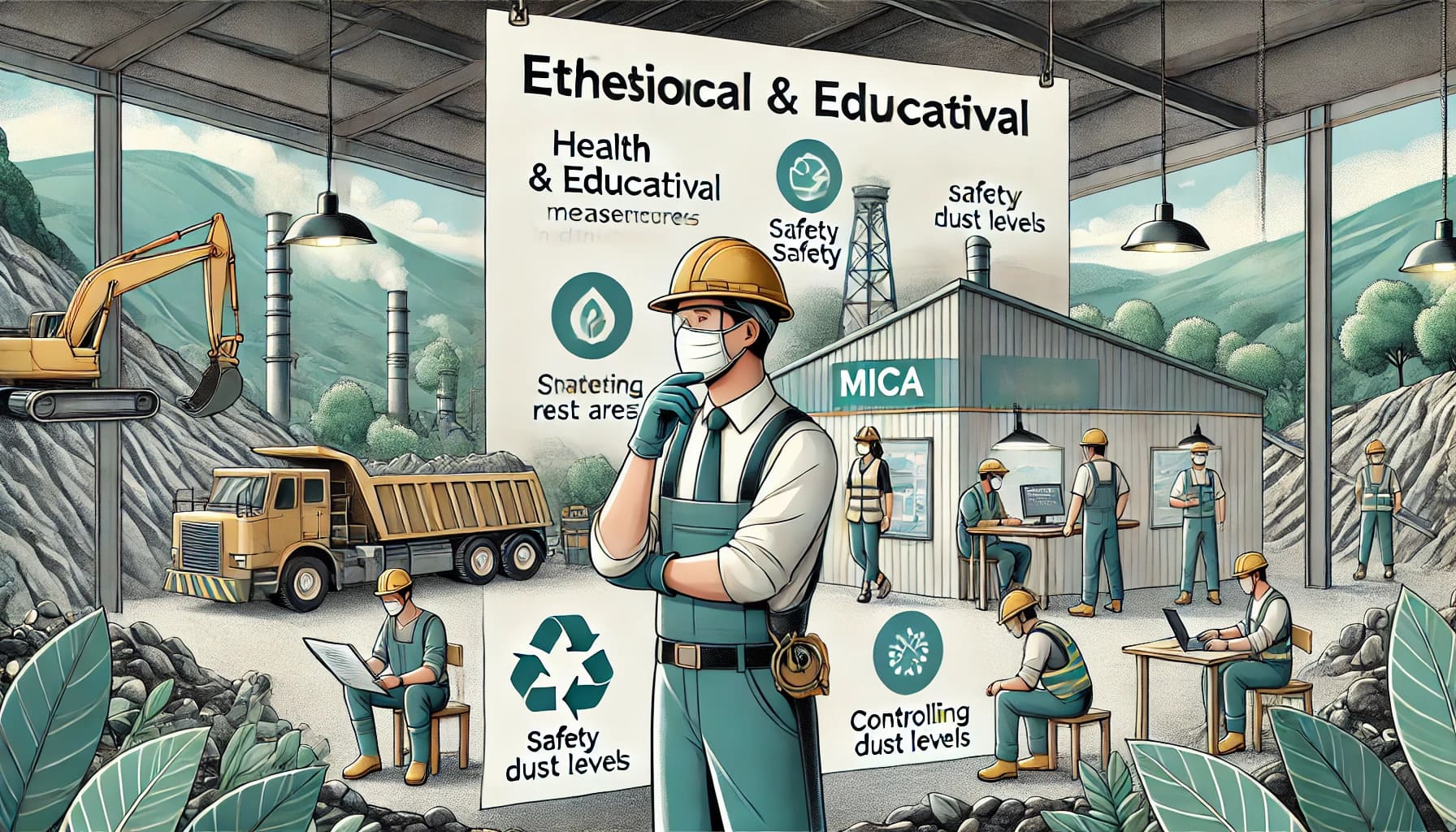Mica, a vital mineral for industries ranging from electronics to cosmetics, is often sourced from mines located in remote regions. While the mica industry supports livelihoods, it also presents significant health and safety challenges for workers. Addressing these issues is crucial for creating a sustainable and ethical mica supply chain. This blog explores the key challenges in mica mining and offers practical solutions to ensure safer working conditions for all involved.
Challenges in Mica Mining
- Occupational Hazards
- Physical Injuries: Miners often work in unsafe conditions with a high risk of injuries from falling rocks, collapsing tunnels, or improper use of tools.
- Respiratory Issues: The mica dust generated during extraction and processing can lead to serious respiratory diseases such as silicosis and pneumoconiosis.
- Lack of Safety Equipment
Many small-scale and informal mining operations lack proper safety gear such as helmets, gloves, and respiratory masks, leaving workers vulnerable to accidents and health risks. - Child Labor
Child labor is a persistent issue in some mica mining regions, where children are employed in hazardous environments without adequate protection or legal oversight. - Environmental Conditions
- Heat and Humidity: Mica mines, especially those located in tropical regions, expose workers to extreme heat and humidity, leading to dehydration and heatstroke.
- Poor Ventilation: Underground mines often suffer from inadequate ventilation, compounding respiratory risks.
- Lack of Awareness and Training
Many miners lack proper training in safe mining practices, increasing the likelihood of accidents and injuries.
Solutions for Health and Safety in Mica Mining
- Implementing Safety Standards
- Governments and mining companies must enforce stringent health and safety regulations, ensuring compliance with international mining standards.
- Regular inspections should be conducted to monitor safety measures and penalize non-compliant operations.
- Providing Proper Equipment
Equipping workers with essential safety gear such as helmets, gloves, steel-toed boots, and dust masks is vital. Employers should ensure that this equipment is readily available and well-maintained. - Investing in Technology
- Mechanized Mining: Introducing modern machinery reduces manual labor and minimizes direct exposure to hazardous conditions.
- Dust Control Systems: Installing systems to suppress and filter dust can significantly reduce respiratory risks.
- Eliminating Child Labor
- Strict enforcement of child labor laws is critical to removing children from hazardous mining environments.
- Initiatives like providing education and alternative income sources for families can address the root causes of child labor.
- Promoting Worker Training Programs
Comprehensive training in safe mining practices, equipment usage, and emergency response protocols can empower workers to protect themselves effectively. - Improving Working Conditions
- Enhancing mine ventilation systems to improve air quality and reduce respiratory risks.
- Providing shaded rest areas and access to clean drinking water to combat heat-related illnesses.
- Community Engagement and Support
Engaging local communities in the decision-making process ensures that their concerns are addressed and that mining operations benefit the entire community. - Collaborating with Global Initiatives
Programs like the Responsible Mica Initiative (RMI) work toward creating a sustainable mica supply chain by addressing labor practices and improving working conditions in mica-producing regions.
Case Studies: Success Stories in Safer Mining Practices
- India’s Responsible Mica Initiative
The RMI collaborates with local governments, NGOs, and mining companies to eliminate child labor and improve safety standards in Indian mica mines. This initiative has already begun transforming mining practices in regions like Jharkhand and Bihar. - Tech-Enabled Safety in South Africa
In some mica mines, wearable technology is used to monitor miners’ health in real-time, alerting supervisors to potential risks like dehydration or oxygen deprivation.
The Role of Consumers and Businesses
- Demand for Ethical Sourcing
Consumers and industries can drive change by prioritizing ethically sourced mica. Transparent supply chains and certifications can ensure that products are free from exploitative practices. - Corporate Responsibility
Companies relying on mica in their products should actively invest in improving mining conditions and promoting sustainability within their supply chains.
Conclusion
The health and safety of workers in mica mining must be a top priority for governments, companies, and global consumers alike. By addressing challenges such as occupational hazards, child labor, and poor working conditions, the mica industry can transform into a model of ethical and sustainable mining. With concerted efforts and collaboration, it is possible to protect workers while ensuring the continued supply of this indispensable mineral.









